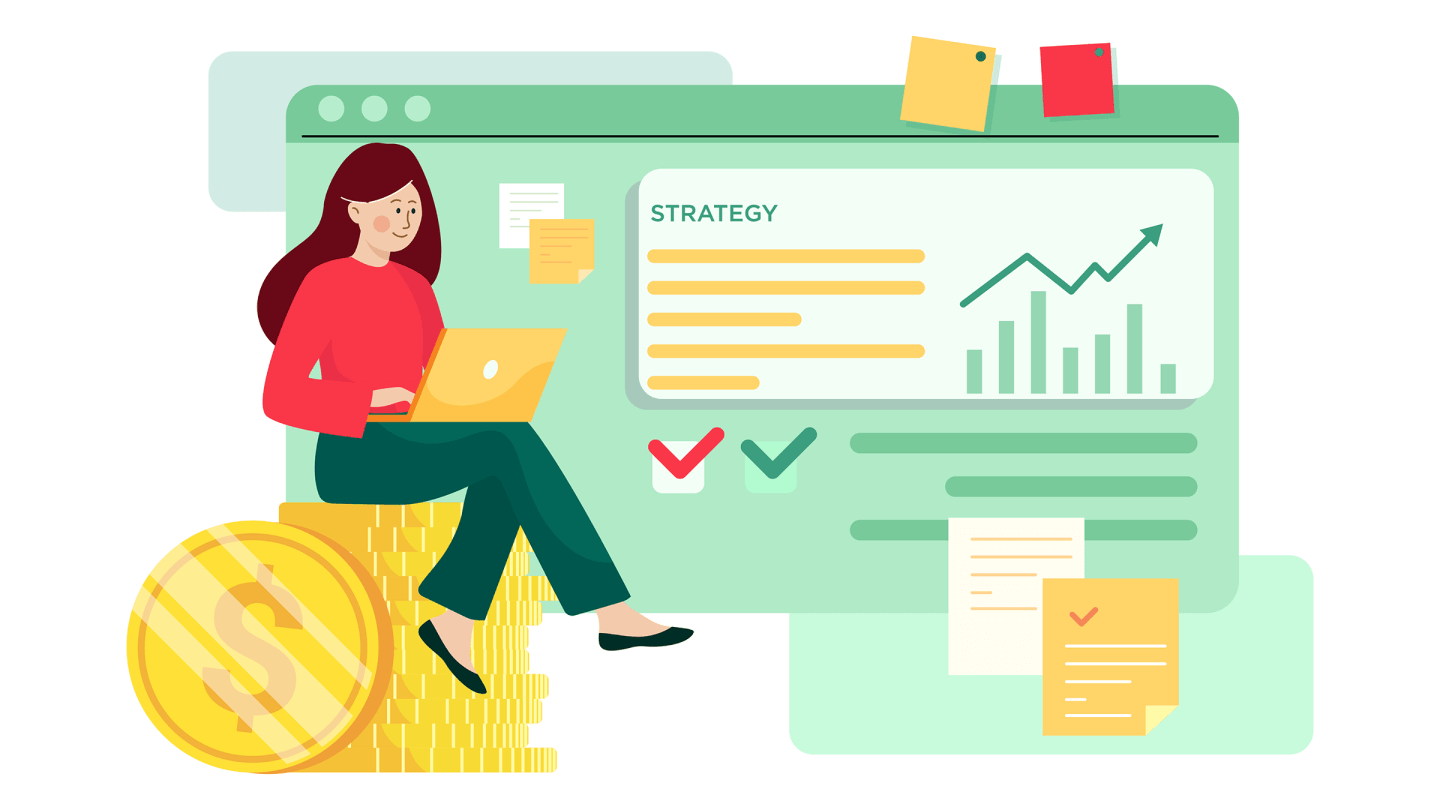Repricing on Amazon involves changing the price of your products, often frequently, to make them more competitive, take advantage of supply and demand changes, win the Buy Box, and increase profit margins.
But there’s more than one repricing strategy.
In fact, there are several different strategies to choose from. So how should you create an Amazon repricing strategy that works for your business?
In this guide, we’ll look at the main factors to consider when creating Amazon repricing strategies.
TL;DR
- There are several factors to consider when coming up with a repricing strategy.
- These include knowing who your real competitors are and understanding your total costs.
- Use these factors to help you choose the right repricing strategy, whether that’s winning the Buy Box, repricing based on inventory, or others.
- Use an automatic repricing tool to make the whole process quicker and more effective.
Prioritize Your Products
The first thing to do is decide which products you want to prioritize.
You may not want to have a strategy for all your products, so prioritize the products that are hard to get rid, of or higher-priced products with more room to discount the price to make them more competitive.
Evaluate your products and focus on the ones that will make the biggest difference to your profits.
Consider supply and demand too. If you’re the first to start selling a product, you can charge a higher price initially. But keep a close eye on it: as more sellers enter the market, you can reprice downwards to stay ahead of your competitors.
Calculate Your Costs

You can’t create a solid repricing strategy without having a good idea of your costs.
Amazon fees are very important when it comes to pricing decisions, as are selling fees and FBA fees.
Know your numbers and get a clear idea of your total costs before you start working on any repricing strategy. It’s much easier to implement a strategy when you have a good idea about your costs.
Costs fluctuate, but they determine your profit. Manufacturing costs, research costs, materials, and shipping costs are all important. You need to know what your costs are before you can determine your strategy.
Go over all the costs and work out how much your bottom line is. Make sure you consider the total prices your competitors are providing, too.
Know Who Your Real Competitors Are
When you’re starting a repricing strategy, you need to know who your competitors really are. It’s not always obvious, and there’s no point in competing with sellers that aren’t your real competitors.
For example, if you’re an FBA seller, you won’t be competing with non-FBA sellers, so this is an easy way to exclude some sellers.
You can also choose to exclude competition based on other factors like their handling days.
The condition of the products comes into it as well. If you sell used products, you don’t want to compete with new products.
Focus on Other Factors Besides Price
Don’t assume that it’s all about price. Price is one of the most important factors, but customers care about other factors as well, including:
- Quality
- Value
- Shipping time
- Customer service
- Product reviews
If you have a better reputation, top reviews, and a faster shipping time, this means you could price your products higher and still get more sales.
Decide on Your Minimum and Maximum Prices
You can’t start a serious repricing strategy without determining the minimum price you’re willing to sell your products for. This will depend on your total costs, as mentioned above.
It’s especially important to have a minimum price to avoid selling at a loss and missing out on profits. There should be a price that you won’t go below.
You can then set this in your repricing software or do it manually. Don’t let emotions get to you, though, or you could end up setting the lowest price but going below your minimum, so you lose out even if you make more sales.
Setting a maximum price is also important. You want to be making more profits, so when a competitor drops off a listing, you can increase your price and take advantage of the lack of competition without going too high.
Keep a Close Eye on Stock

You want to manage your inventory carefully to reduce expenses and increase profits. If you run out of stock, this can have a big impact on your ability to win the Buy Box.
Whatever repricing strategy you decide on, make sure you keep your item in stock to remain consistently competitive.
Decide on a Repricing Strategy
Now we’ve highlighted some of the main factors that impact your repricing strategy, it’s time to look at actual strategies.
You may have one strategy that you always use, or you may use several pricing strategies at the same time. Here are some of the most popular strategies.
Win the Buy Box
Winning the Buy Box is one of the most popular repricing strategies, and it’s obvious why. The Buy Box is where most of the sales are made, and it’s prime real estate for sellers.
You can use a repricing strategy to help you win it.
Firstly, remember that being the cheapest seller isn’t the only factor that will help you win the Buy Box. You should also use Amazon FBA, have a good Amazon seller rating and low returns, and avoid running out of stock.
But the price is a big factor. Use a strategy where you take on your competitors, and reduce your price when they do. Remain competitive and keep the pressure on to improve your chances.
Keep the Buy Box
Once you win the Buy Box, you’re in a good place. But you should now do everything you can to stay there. Your repricing strategy should also focus on this.
How?
You can use a strategy whereby you increase the price of your product incrementally while you’re in the Buy Box. You’re in a prime position, so this is a good opportunity to make more sales and more profit.
Keep increasing the price of your product slowly. If you lose the Buy Box, go back to the previous price. This is the optimal price you can charge. When you win it again, you’ll have a better idea about what you can charge and still be in the Buy Box.
Reprice Even if You Have No Competition
Don’t assume that repricing is only needed when you compete with multiple sellers. Even if you’re the only seller with a product listing, don’t get complacent.
The temptation is to set the price high and then leave it, but this can suddenly backfire if a new competitor arrives. Be prepared for competition to emerge at any time.
Reprice Based on Your Inventory
Inventory levels often play a role in repricing decisions. Lower your prices when inventory is high and get rid of stock that’s hard to shift so you don’t get stuck with too much.
Change Prices Based on Time of Day
You can have a repricing strategy that takes the time of day into account. There may be better sales times and slower sales times. Not just times of the day, but days of the week and seasons.
Don’t just cut prices. Put them up when there are fewer sales to make more profits to make up for the lack of sales.
Choose an Automated Amazon Repricing Tool
All of the above are possible repricing strategies you can use. Perhaps you want to focus on one, or maybe a selection of them for different products at the same time.
But how should you go about it?
You can do manual repricing, but it’s time-consuming. It involves constant monitoring of your competitors and changing prices multiple times a day.
That’s why most sellers prefer to use repricing software like Repricer.
Automatic repricing software is smarter than ever. You can set your rules based on what you want to achieve, fine-tune them, and then let the tool do its magic.
Set a minimum price you don’t want to go below, choose your strategy (win the Buy Box, keep the Buy Box, etc.), and use your inventory to make automatic price changes.
It’s a lot quicker and easier than doing it manually, and you can also avoid making errors and making pricing decisions based on emotions.
You can leave a repricing tool to do its work while you get on with running your business and focus on other areas like customer service, listing optimization, Amazon SEO, and advertising.
Use Results to Revise Your Strategy
However you go about your repricing, make sure you don’t leave it and forget it. Return to your strategy regularly and review the results. Use the data to make decisions about how to continue.
Get a better idea about which techniques work best and which strategies are not as effective for your products.
Experiment, change things up, and track everything, so you know what’s working and what’s not working.
Conclusion
Having a solid repricing strategy in place should be considered essential for all Amazon sellers, even if you have a single product.
Go through the initial stages, consider all the factors, calculate your costs, understand who your competitors are, and use this information to put together a repricing strategy for your business.
Then track results, change strategies that are not working, and keep optimizing your strategy to boost sales and profits.


